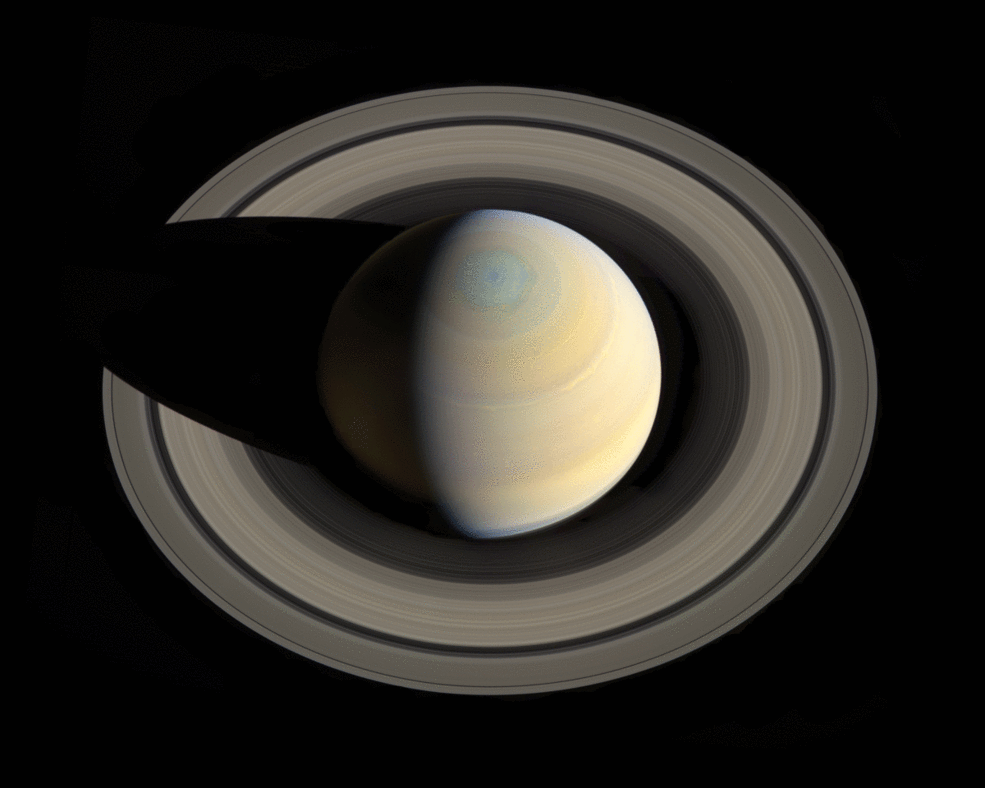Key Takeaways
- NASA’s latest research confirms Saturn’s rings are disappearing at an alarming rate, in line with worst-case predictions.
- The phenomenon of “ring rain” is causing the ice particles in the rings to be pulled into Saturn by its magnetic field.
- The entire ring system is estimated to vanish within 300 million years, an astonishingly short period compared to Saturn’s age of over 4 billion years.
- The research suggests that the rings likely formed relatively recently, acquired later in Saturn’s life, and may not be older than 100 million years.
- Enceladus, a geologically active moon, is also contributing to Saturn’s ring rain, making it a potential target for the search for extraterrestrial life.
NASA’s recent research has confirmed that Saturn is undergoing a significant loss of its distinctive rings, with the rate of depletion matching the maximum estimates drawn from observations made by Voyager 1 and 2 several decades ago. This phenomenon, known as ‘ring rain,’ involves the gravitational pull of Saturn drawing in ice particles from its rings, influenced by the planet’s magnetic field.
James O’Donoghue, from NASA’s Goddard Space Flight Center in Greenbelt, Maryland, noted, “We estimate that this process drains an amount of water products equivalent to filling an Olympic-sized swimming pool from Saturn’s rings in just half an hour.” O’Donoghue, the lead author of a study published in Icarus, further elaborated, “Based on this estimation alone, the entire ring system will vanish in approximately 300 million years. However, considering the additional contribution from ring-material detected by the Cassini spacecraft falling into Saturn’s equator, the rings are expected to disappear in less than 100 million years. This timeframe is relatively short compared to Saturn’s age of over 4 billion years.”
The research sheds light on the origin of Saturn’s rings, suggesting that they likely formed later in the planet’s life rather than being present since its formation. The study indicates that the rings are unlikely to be older than 100 million years, as it would take that long for the C-ring to achieve its current density if it were once as dense as the B-ring. O’Donoghue remarked, “We are fortunate to witness Saturn’s ring system, which seems to be in the middle of its lifespan. However, if rings are indeed temporary, we may have missed witnessing the giant ring systems of Jupiter, Uranus, and Neptune, which now only possess thin ringlets.”
Various theories have been proposed regarding the origin of Saturn’s rings. One possibility is that they formed through collisions between small, icy moons orbiting Saturn, perhaps triggered by gravitational disturbances from passing asteroids or comets.

The existence of ring rain was initially suggested by Voyager observations of seemingly unrelated phenomena, including variations in Saturn’s ionosphere, density fluctuations in its rings, and dark bands encircling the planet’s northern mid-latitudes. These bands were first observed in images of Saturn’s upper atmosphere captured by NASA’s Voyager 2 mission in 1981.
In 1986, Jack Connerney of NASA Goddard proposed a link between these dark bands and Saturn’s magnetic field, suggesting that electrically charged ice particles from the rings were flowing along invisible magnetic field lines, depositing water in Saturn’s upper atmosphere. This influx of water, occurring at specific latitudes, obscured the stratospheric haze, resulting in the dark bands seen in the Voyager images.
Saturn’s rings primarily consist of water ice particles ranging from microscopic dust grains to boulders several yards across. These particles are held in a delicate balance between Saturn’s gravitational pull, which tends to draw them inward, and their orbital velocity, which pushes them outward. When particles become electrically charged, either by sunlight or by plasma clouds from micrometeoroid impacts, they can be influenced by Saturn’s magnetic field and drawn into the planet’s upper atmosphere along magnetic field lines.
Once in the upper atmosphere, the icy particles vaporize, and the water reacts chemically with Saturn’s ionosphere, leading to the formation of H3+ ions. When energized by sunlight, these ions emit infrared light, which was observed by O’Donoghue’s team using instruments attached to the Keck telescope in Hawaii.
The team’s observations revealed glowing bands in Saturn’s northern and southern hemispheres, corresponding to regions where the magnetic field lines intersect the ring plane and enter the planet. These bands provide insights into the quantity of ring rain and its effects on Saturn’s ionosphere. Additionally, a glowing band at a higher latitude in the southern hemisphere suggests that water particles from the geologically active moon Enceladus also contribute to the ring rain.
The researchers are interested in studying how ring rain varies with Saturn’s seasons, as the planet’s exposure to sunlight affects the charging of ice grains and their response to the magnetic field.
Funding for the research was provided by NASA and the NASA Postdoctoral Program at NASA Goddard, with observations conducted using the W.M. Keck Observatory in Hawaii. The authors also acknowledge the cultural significance of Mauna Kea within the indigenous Hawaiian community.


